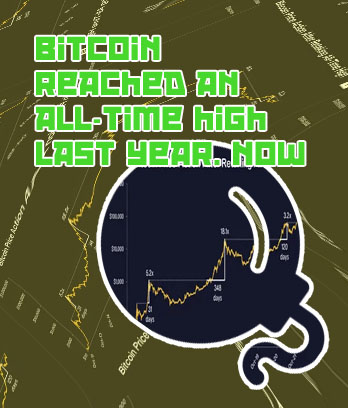Bitcoin's price has seen significant fluctuations over the years, with its value reaching all-time highs at various points in time. Understanding when Bitcoin reached its peak can provide valuable insights into the cryptocurrency market and help investors make informed decisions. To shed light on this topic, here are two articles that delve into Bitcoin's all-time high and the factors that contributed to its price surge.
The Rise and Fall of Bitcoin: A Look at Its All-Time High

Bitcoin, the world's first decentralized digital currency, has experienced a rollercoaster ride in terms of its value since its inception in 2009. It reached its all-time high in December 2017, soaring to nearly ,000 per coin before plummeting to around 3,000 by the end of 2018. This drastic rise and fall captured the attention of investors, regulators, and the general public, sparking debates about the future of cryptocurrencies.
The rise of Bitcoin was fueled by a combination of factors, including increased mainstream adoption, media attention, and speculation. Investors saw the potential for massive returns and rushed to buy in, driving up the price to unprecedented levels. However, the bubble eventually burst, leading to a sharp decline in value as panic selling ensued. This sudden crash highlighted the volatile nature of cryptocurrencies and the risks involved in investing in them.
Despite its tumultuous history, Bitcoin remains a popular investment option for many individuals and institutions. Its decentralized nature, limited supply, and potential for high returns continue to attract those looking to diversify their portfolios. However, it is important for investors to exercise caution and conduct thorough research before diving into the world of cryptocurrencies.
Unraveling the Mystery Behind Bitcoin's Record-Breaking Price

Bitcoin's recent surge in price has left many investors and analysts baffled, as the cryptocurrency continues to break records and reach new heights. The digital currency, which was once dismissed as a passing fad, has now established itself as a legitimate asset class with the potential for substantial returns.
One of the key factors driving Bitcoin's price is its limited supply. Unlike traditional currencies that can be printed endlessly by central banks, Bitcoin has a fixed supply cap of 21 million coins. This scarcity has led to a surge in demand, as investors seek to acquire a piece of the digital gold rush.
Another factor fueling Bitcoin's rise is growing institutional adoption. Major corporations and financial institutions are beginning to recognize the value of Bitcoin as a store of value and a hedge against inflation. This influx of institutional capital has further boosted Bitcoin's price and credibility in the eyes of mainstream investors.
Additionally, the ongoing economic uncertainty caused by the global pandemic has led many to seek out alternative investments, such as Bitcoin, as a way to protect their wealth from market volatility.
In order to better understand the factors driving Bitcoin's record-breaking price, investors should consider the cryptocurrency's underlying technology, the regulatory environment surrounding digital assets, and the potential impact of geopolitical events on the market. By staying informed and conducting thorough